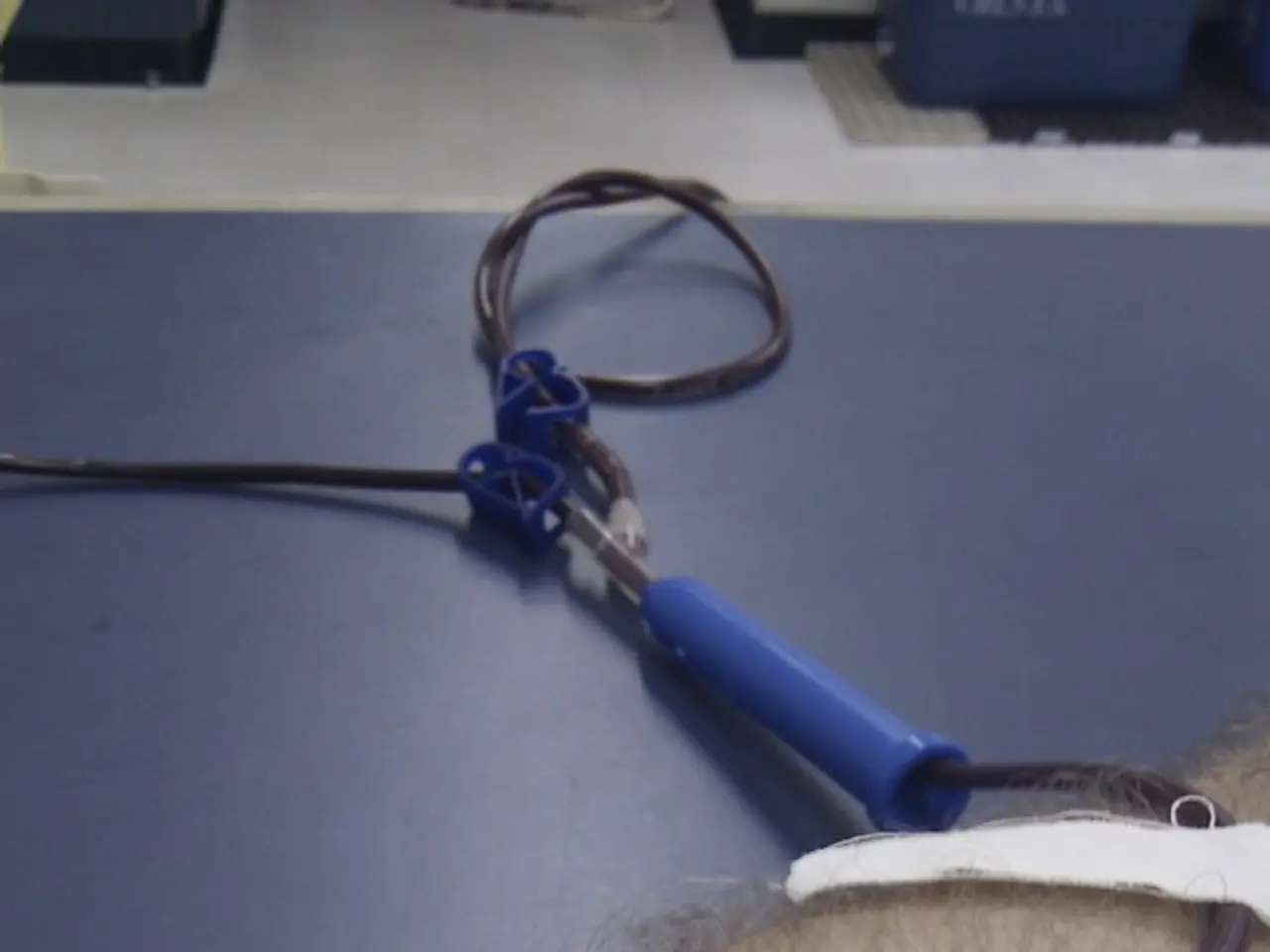Finger Blood Clot: Understanding Causes, Signs, and Remedies
Blood clots in the fingers can be a cause of concern, and it's essential to understand their common causes, symptoms, and treatment options. This article will focus on two types of blood clots that can form in the fingers: palmar digital vein thrombosis and subungual hematoma.
Palmar Digital Vein Thrombosis
Common Causes
Palmar digital vein thrombosis typically occurs due to inflammation or injury to the veins in the finger, often resulting in a blood clot forming on the palm side of the finger, usually near the middle joint. Causes can include trauma, repetitive strain, or conditions like superficial thrombophlebitis.
Symptoms
Symptoms of palmar digital vein thrombosis include pain, swelling, redness, and warmth along the affected vein. Patients may experience localized discomfort and potential limitations in finger movement due to swelling.
Treatment Options
Treatment often involves managing symptoms and may include pain relief, anti-inflammatory medications, and sometimes anticoagulants to prevent further clotting. In severe cases or if symptoms persist, more aggressive treatments like thrombectomy (removal of the clot) may be considered.
Subungual Hematoma
Subungual hematoma refers to bleeding under the fingernail, which is not exactly a blood clot but can be related to trauma that leads to clotting.
Common Causes
Causes of subungual hematomas include trauma to the finger, such as a crush injury, that can cause bleeding under the nail.
Symptoms
Symptoms include pain, swelling, and discoloration under the nail, which can turn blue or purple. The nail may become loose or fall off if the hematoma is large enough.
Treatment Options
Treatment often involves relieving pressure by drilling a hole in the nail to allow blood to escape, which can help reduce pain and speed healing. In some cases, the nail may need to be removed if the hematoma is large or if there is significant nail lifting.
Both conditions require prompt medical attention to ensure proper diagnosis and treatment. Addressing any blood clotting disorders may help prevent a blood clot from forming, and this may include taking blood thinning medication. A subungual hematoma is a temporary condition that typically resolves with time as the nail grows out.
It's important to note that while blood clots in the fingers are usually not life-threatening, a blood clot in the lung (pulmonary embolism) can be. Symptoms of a pulmonary embolism include chest pain, sudden shortness of breath, rapid heart rate, and an unexplained cough with or without blood. Treating a blood clot in the finger usually involves massaging the lump and applying a compression bandage. In some cases, surgery may be necessary.
Blood clots in the fingers can form due to trauma or injury, repetitive tasks, blood clotting disorders, or certain medications. Consulting a doctor can help ensure that a blood clotting disorder is not missed. The duration of a blood clot in the finger varies, and the discolored nail may take 6-9 months to grow out fully. A blood clot in the finger may be dangerous if it breaks free and travels through the body.
Stay safe and seek medical advice if you suspect you have a blood clot in your finger or experience any symptoms related to blood clots or pulmonary embolism.
- Inflammation or injury to the veins in a finger can lead to ulcerative palmar digital vein thrombosis, creating a blood clot on the palm side of the finger, usually near the middle joint.
- Repetitive strain or conditions like superficial thrombophlebitis can be contributing factors to palmar digital vein thrombosis.
- Symptoms of palmar digital vein thrombosis include pain, swelling, redness, and warmth along the affected vein with potential limitations in finger movement due to swelling.
- Treatment for palmar digital vein thrombosis may involve pain relief, anti-inflammatory medications, and sometimes anticoagulants to prevent further clotting, with aggressive treatments like thrombectomy being considered for severe or persistent cases.
- Subungual hematoma refers to bleeding under the fingernail, not a blood clot, but related to trauma that leads to clotting.
- Trauma to the finger, such as a crush injury, can cause subungual hematomas, leading to pain, swelling, and discoloration under the nail, which can turn blue or purple.
- Treatment for subungual hematomas often involves relieving pressure by drilling a hole in the nail to allow blood to escape, helping reduce pain and speed healing, with the nail potentially needing to be removed in some cases.
- Atopic dermatitis, diabetes, multiple sclerosis, breast cancer, and chronic kidney disease, among other chronic diseases, can increase the risk of blood clots.
- Depression, mental health, and skin care are essential aspects of health and wellness, as they can also contribute to chronic diseases like diabetes and can influence the response to therapies and treatments.
- Fitness and exercise, proper nutrition, and medical-conditions screening are crucial components of maintaining overall health and managing chronic diseases, including chronic kidney disease, respiratory conditions, eye health, and diabetes.
- Predictive science plays a vital role in identifying potential genetic predispositions or risks, allowing for early intervention and prevention strategies in the face of colitis, cancer, and other conditions.
- Therapies and treatments, such as chemotherapy, radiation, or medication, can help manage and ease symptoms related to various chronic diseases, including diabetes, multiple sclerosis, and cancer.
- Medicare provides coverage for many healthcare services and treatments, such as nutrition counseling, mental health services, and chronic disease management programs to improve the lives of those living with chronic diseases, diabetes, cancer, and chronic kidney disease.







